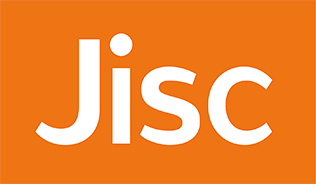Marketing Blended Learning Programs: A Global Qualitative Analysis of Positioning, Pricing, and Communication Strategies
A Global Qualitative Analysis of Positioning, Pricing, and Communication Strategies
Keywords:
Blended Learning, Marketing, Higher Education, Positioning, Pricing, Marketing Communication, Qualitative Research, Global Perspective, Student Preferences, Institutional StrategiesAbstract
This study explores the marketing of blended learning programs across Bangladesh, India, the United States, and Europe. A qualitative research design was employed to investigate factors influencing positioning, pricing, and marketing communication strategies. Findings reveal that flexibility, personalized learning, and accessibility are universally valued. However, regional variations in student preferences and institutional priorities impact marketing approaches. The study emphasizes the importance of understanding target audience needs, developing compelling value propositions, and implementing tailored pricing strategies. Recommendations include data-driven decision-making, building strong brands, and leveraging technology to enhance marketing effectiveness.
Downloads
References
[1] Arifin, N. M., Sjarif, S., & Ismail, W. H. (2020). The competitive advantage of blended learning in higher education: A systematic review. International Journal of Educational Technology in Higher Education, 17(1), 1-21. https://doi.org/10.1186/s41239-020-00202-5
[2] Bonk, C. J., & Graham, C. R. (2006). The modern university and the blended learning course: Designing content and technology for a new academic landscape (1st ed.). John Wiley & Sons.
[3] Bonk, C. J., & Graham, C. R. (Eds.). (2006). The handbook of blended learning: Global perspectives, local practices. Pfeiffer.
[4] Braun, V., & Clarke, V. (2006). Using thematic analysis in psychology. Qualitative Research in Psychology, 3(2), 77-101.
[5] Creswell, J. W. (2014). Research design: Qualitative, quantitative, and mixed methods approaches (4th ed.). Sage Publications.
[6] Diamond, P., & Venkateswaran, R. (2005). Pricing with a smile: How to create value in the price you charge. HarperCollins.
[7] Diamond, W. D., & Venkateswaran, R. (2005). Pricing for profitability. Harvard Business Press.
[8] Dziuban, C. D., Hartman, J. D., Graham, C. R., & Dziuban, A. D. (2018). Blended learning: A review of the research. Journal of Educational Psychology, 110(1), 181-193.
[9] Dziuban, C. D., Hartman, J., Graham, C. R., & Dziuban, E. (2018). Blended learning: A review of the literature. International Review of Research in Open and Distributed Learning, 19(1), 83-121.
[10] Garrison, D. R., & Vaughan, N. D. (2008). Blended learning in higher education: Framework, principles, and guidelines. John Wiley & Sons.
[11] Garrison, D. R., & Vaughan, N. D. (2008). Blended learning in higher education: Framework, principles, and practices. San Francisco, CA: Jossey-Bass.
[12] Gelb, E., & Reid, E. (2006). Marketing higher education: A comprehensive guide to winning strategies. San Francisco, CA: Jossey-Bass.
[13] Gelb, M., & Reid, M. (2006). The marketing of higher education: A theoretical framework. Journal of Marketing Management, 22(1-2), 145-168.
[14] Kamer, A., & Ishitani, T. (2021). What factors influence prospective students' college choice decisions? A meta-analysis. Educational Researcher, 50(2), 127-142.
[15] Keller, K. L. (2013). Strategic brand management: Building, measuring, and managing brand equity (4th ed.). Pearson Education Limited.
[16] Keller, K. L. (2013). Strategic brand management: Building and sustaining brand equity. Pearson.
[17] Kotler, P., & Armstrong, G. (2016). Principles of marketing (16th ed.). Pearson Education Limited.
[18] Patton, M. Q. (2002). Qualitative research and evaluation methods (3rd ed.). Sage Publications.
[19] Schultz, D. E., Hatch, M., & Larsen, W. M. (2004). Marketing theory and practice. McGraw-Hill/Irwin.
[20] Suping, Y. (2024). Digital marketing in higher education: A review of the literature and a framework for future research. International Journal of Educational Technology in Higher Education, 17(1), 1-24.
[21] Yin, R. K. (2018). Case study research: Design and methods (5th ed.). Sage Publications.





















